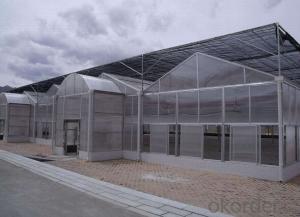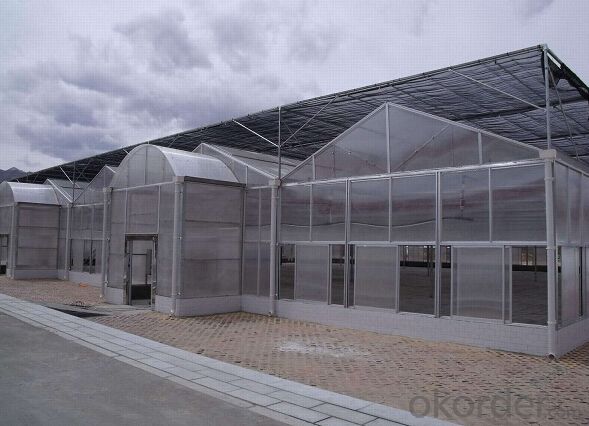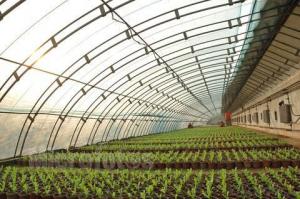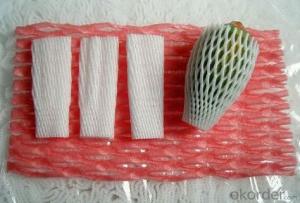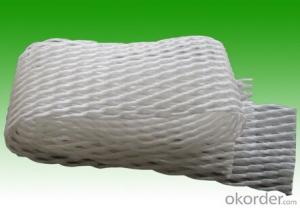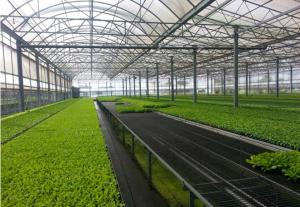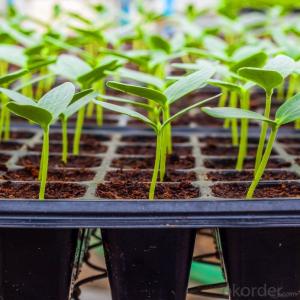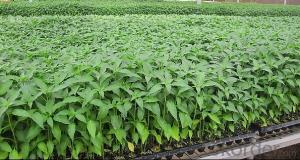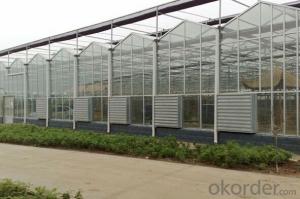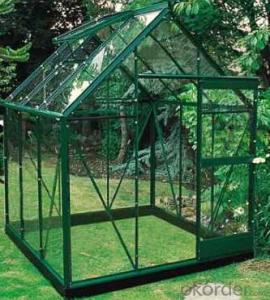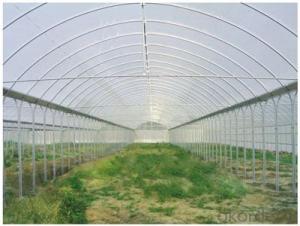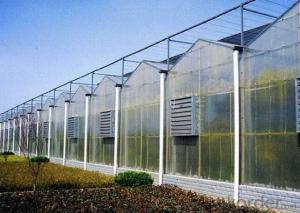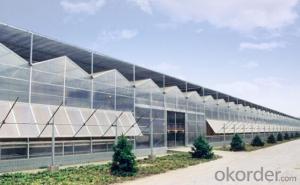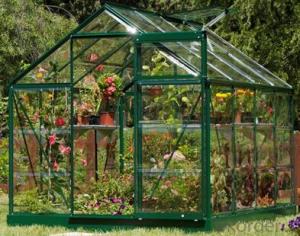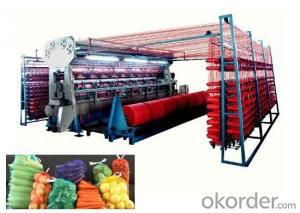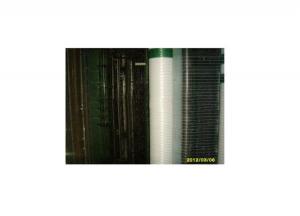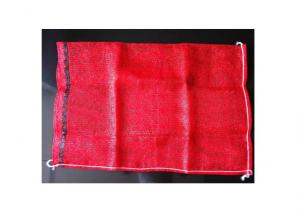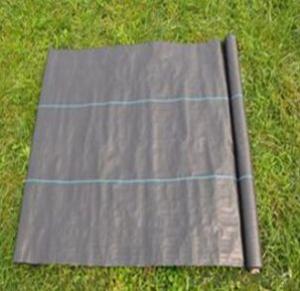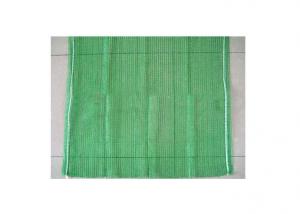Multi-span polycarbonate green house for plant
- Loading Port:
- Shanghai
- Payment Terms:
- TT OR LC
- Min Order Qty:
- 10 set
- Supply Capability:
- 10000 set/month
OKorder Service Pledge
OKorder Financial Service
You Might Also Like
Specifications
1- POLYCARBONATE GREEN HOUSE
2- Good for warm keeping.
3- Strong,Good Looking.
POLYCARBONATE GREEN HOUSE
1-Structure: Hot galvanized steel tubes, Triple-A Roof structure per bay. 15 year warranty.
2- Covered by twin-wall polycarbonate sheet.10 year warranty. Anti-storm. Anti-hail. Anti-Snow. Best material for warm-keeping.
3-Strength: Long life ,Good looking, Warm keeping. Energy saving in winter.
4-Suitable for heavy snow place, flower market, expensive flower & vegetable planting, research center or restaurant.
Optional:
1-Outside&Inside Shading system controlled.
2- Cooling Pad & Fan system.
3-Auto-enviroment controlled panel.
4-Rounf Roof instead of Triple A-Style is available with simplified structure.
- Q: How do agricultural plastic products improve crop maturity?
- Agricultural plastic products, such as mulch films and greenhouse covers, improve crop maturity by providing a controlled environment for plants. These products help retain moisture in the soil, prevent weed growth, regulate soil temperature, and protect crops from harsh weather conditions. With optimal growing conditions, including consistent moisture and temperature levels, crops can mature more efficiently, resulting in higher yields and better quality produce.
- Q: What are the various methods used to recycle plastic products from agriculture?
- <p>Current recycling methods for agricultural plastic products include mechanical recycling, where plastics are cleaned, ground, and reprocessed; chemical recycling, which involves breaking down plastics into their chemical components and reforming them; and energy recovery, where plastics are incinerated to produce energy. Additionally, there's a focus on biodegradable plastics and recycling programs that encourage proper disposal and collection of these materials. These methods aim to reduce waste and environmental impact while finding new uses for agricultural plastics.</p>
- Q: Can you get cancer if thr plastic like gets into the water?
- It is true that there are chemicals in plastic that (in high amounts) have been shown to induce cancer in laboratory tests, but most of what you see about this is just overreaction. You aren't melting them in the microwave and drinking the plastic right? Didn't think so. We are exposed to hundreds of chemicals every day, they are in everything, and they are always finding new ones they say cause one thing or another. It's unlikely drinking from a water bottle will ever hurt anyone.
- Q: How do you prevent ground cover plants from spreading into flower beds?
- One effective way to prevent ground cover plants from spreading into flower beds is by installing a physical barrier, such as a plastic or metal edging, between the two areas. This will create a clear boundary and prevent the ground cover plants from encroaching onto the flower beds. Regular maintenance like trimming and pruning the ground cover plants can also help control their growth and prevent them from spreading.
- Q: Can ground cover plants be used to cover bare spots in lawns?
- Yes, ground cover plants can be used to cover bare spots in lawns. They not only provide an attractive alternative to bare soil, but they also help prevent erosion, inhibit weed growth, and add texture and color to the overall landscape.
- Q: This question asks about the possible issues associated with the utilization of recycled agricultural plastic films.
- <p>Recycled agricultural plastic films can present several potential problems. First, the quality of recycled material may be inconsistent, leading to weaker or less durable products. Second, the recycling process can be energy-intensive and may produce additional waste or emissions. Third, there could be contamination issues if the films are not properly cleaned before recycling, which can affect the purity and safety of the recycled material. Lastly, the market for recycled agricultural plastic films might be limited, making it challenging to find buyers and thus affecting the economic viability of recycling programs.</p>
- Q: I was looking at plastic surgery before-and-after pictures and the question just popped into my head.
- In plastic surgery, at times they use implants, these implants are made of silicone NOT plastic. For example, most rhinoplasty procedures do not include inserting a nose silicone implant, however, some people have a flat nose, a low bridge nose or not a defined nose bridge (African and Asian noses for example), this will lead the plastic surgeon to add a silicone implant. A person can feel this, and if the procedure was not successful, than it can be obvious. Just remember, plastic surgery, does not use real plastic. it is just called plastic surgery.
- Q: Can nursery trays be used for air plants?
- Yes, nursery trays can be used for air plants. Air plants do not require soil to grow, so they can be placed directly in the trays or on other surfaces such as rocks or driftwood. The trays can provide a convenient and organized way to display and care for air plants.
- Q: We're doing a thesis about adding plastic to cement. :)
- Plastic fibers have been used as an additive in concrete for years. There are two types....long strand and short strand. It is seldom used in commercial applications but frequently used in residential slabs. I have used this product and prefer the long strand. It's makes for a more difficult finish. The plastic fibers are not intended to eliminate rebar in footers or vertical support members. The product is primarily used in open slab areas. Google is full of info on slumps tests.
- Q: What are the different types of agricultural plastic films?
- There are several types of agricultural plastic films used in farming practices, including greenhouse films, mulch films, and silage films. Greenhouse films are used to create a controlled environment for plants, providing protection from weather elements and optimizing growth. Mulch films are laid on the soil surface to suppress weeds, conserve moisture, and regulate soil temperature. Silage films are used to cover and protect silage, a type of fermented animal feed, preserving its quality and preventing spoilage.
Send your message to us
Multi-span polycarbonate green house for plant
- Loading Port:
- Shanghai
- Payment Terms:
- TT OR LC
- Min Order Qty:
- 10 set
- Supply Capability:
- 10000 set/month
OKorder Service Pledge
OKorder Financial Service
Similar products
Hot products
Hot Searches
Related keywords
